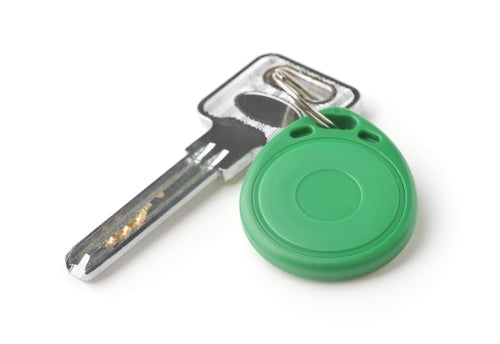No Products in the Cart

In the ever-evolving world of security technology, access control systems have become an essential component of ensuring the security and convenience of apartment buildings. Gone are the days of traditional locks and keys, as modern access control systems now offer a plethora of advanced, hassle-free solutions. One of the most prevalent and efficient options are access control systems that rely on proximity key fobs (also referred to as 26-bit key fobs). In this article, we will explore the various types of access control systems for apartment buildings, with a focus on the ubiquitous proximity key fob.
Proximity key fobs / 26-bit key fobs are basically an electronic alternative to traditional keys. Proximity key fobs use an advanced technology known as Radio Frequency Identification (RFID) in order to communicate with a proximity reader. If the proximity reader recognizes and validates the credentials and security clearance programmed to the 26-bit key fob, then it will grant the user access to the building's premises. These small, pocket-sized devices have gained immense popularity due to their convenience and enhanced security features.
Due to their efficiency and convenience, access control security systems centered around proximity key fobs / 26-bit key fobs have become the most common type of access control solution utilized in apartment buildings. On such a model, residents are issued personalized proximity key fobs that are programmed with unique security permissions and credentials for each resident and are registered in the central access control database. As such, when an authorized user approaches a valid entry point, they need only wave their proximity key fob near the proximity reader, which quickly verifies their credentials and grants access.
Biometric access control systems can work in tandem with proximity key fob systems to provide an added layer of security to the apartment complex. These systems use unique biological characteristics such as fingerprints, iris patterns, or facial recognition to grant access. Once the user scans their proximity key fob, biometric authorization is then initiated. While proximity key fobs remain an integral part of biometric systems, the biometric data acts as the primary authentication method.
Keypad entry systems are another example of an access control system that relies on two-factor authentication. After residents scan their proximity key fob, a keypad is activated, at which point the user must enter their unique pin code in order to be granted access, thereby adding another layer of security.
In an increasingly digital world, mobile access control has gained traction in apartment buildings. Through a dedicated mobile app, residents can use their smartphones as virtual proximity 26-bit key fobs. With this technology, tenants can access the building simply by tapping their smartphones against the reader, eliminating the need for physical fobs altogether.
Another innovative feature offered by proximity key fob systems is remote access control. Property managers and building owners can grant temporary access privileges to guests, delivery personnel, or maintenance workers without physically issuing a key fob. This enhanced flexibility and ease of access management are significant advantages of proximity-based systems.
Modern proximity key fob systems are often integrated with other building management and security systems. As such, proximity key fob systems can be seamlessly coordinated with security cameras, intercoms, elevators, and parking control systems, further enhancing the overall security and convenience of the apartment building.
Proximity key fobs / 26-bit key fobs offer cost-effectiveness in the long run. Traditional keys may require expensive re-keying if lost, but with proximity key fobs, residents can be easily issued new proximity key fobs. Additionally, these systems require minimal maintenance, reducing operational costs and the need for regular replacements.